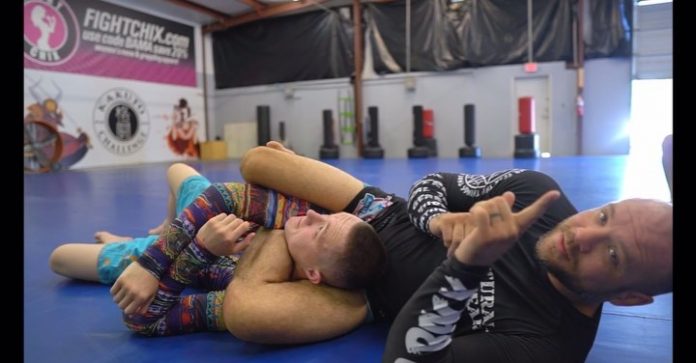
The triangle choke is a real hallmark of Brazilian Jiu-Jitsu. Despite the fact that it was used in old Judo curriculums, the triangle never really broke through in martial arts until BJJ came along. The UFC, Mel Gibson in Lethal Weapon, and the Gracie family’s logo is all it took for this strangle to establish itself as one of the defining techniques of Brazilian Jiu-Jitsu. Over the years, it has developed, and today, we see the rise of what is arguably the most efficient variation to date – the rear triangle choke.
Up until a few years ago, the rear triangle choke was a move that people use d sparingly in Jiu-Jitsu or MMA. The front triangle, and even the reverse triangle to a point, was much more utilized options than the rear triangle. A part of it may be because we usually got there form the back, and in BJJ, people are taught to never give up on back control. However, with the evolution of BJJ, the rear triangle transformed from a choke to a very useful position of control that opens up lots of options with next to no effort.
The Rear Triangle Position
First and foremost, let’s look at the mechanics of the rear triangle choke. I’ll start talking directly about the position, and I’ll cover entries later in this article. As with all triangle chokes, the rear triangle utilizes a closed wedge around the opponent’s neck. What makes it really potent is the fact that the wedge includes one of the opponent’s arms, making it extremely difficult to get out of.
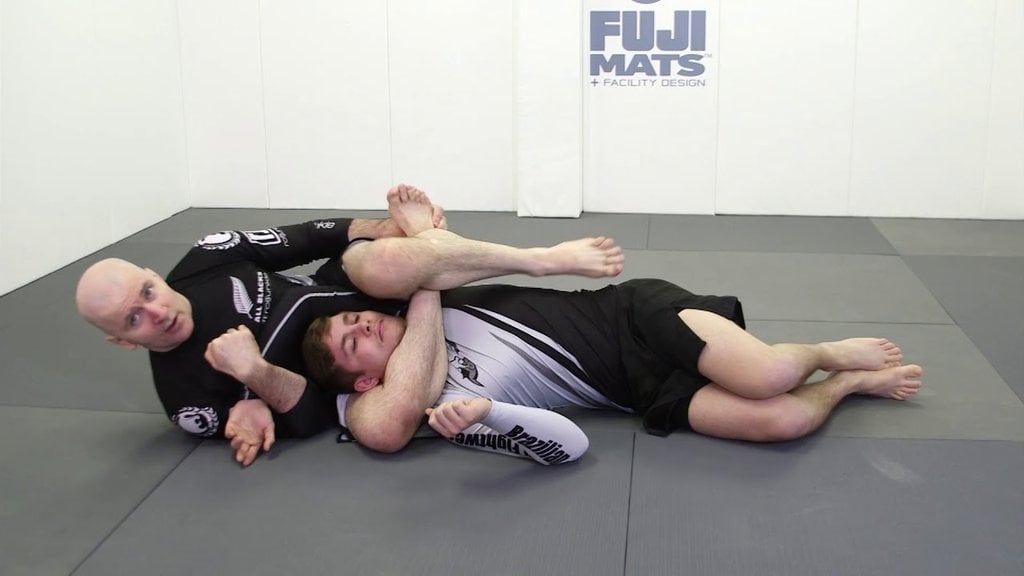
Why is the rear triangle choke better than the front, side, or reverse variations? To begin with, you’re behind your opponent, which provides you with a great advantage. Moreover, you remove any chance of an opponent posturing or using strength to get out of the choke. ON top of it all, you control how, when, and if they can turn to their side, which gives you complete dominance over the opponent. And that’s before you even think about tapping people out with the rear triangle choke.
Getting There
The rear triangle choke is something you can actually get from a host of different positions. Of course, setting it up from the back is the most utilized entry. However, you can get there from virtually anywhere, like for example top side control or turtle. In fact, the ability to get to a position from as many different spots as possible is a huge determinant of how effective a move is going to be. It suffices to say the rear triangle choke is one of the most effective moves in modern-day Jiu-Jitsu.
From Back Control
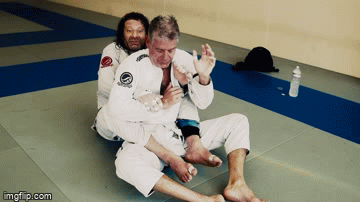
The main thing when setting up the rear triangle from back control is getting that first leg over the shoulder. And it is all about the grip. Using a cross grip is the best way to set it up as the elbow of the arm needs to stay close to the opponent’s ribs in order for you to get the leg over. Plus, a cross grip means your arm is in place to help the leg thread through and wedge the opponent’s arm in. Once you have it, you simply lie down to the side of the top leg and start working for your rear triangle choke, or other available submissions.
From Side Control
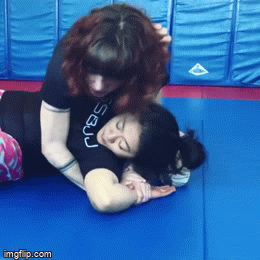
You only let go of the grip on the far arm, when you’re ready to fall to your side, in order to lock the rear triangle choke up. It is cruise control from thereon.
From Turtle
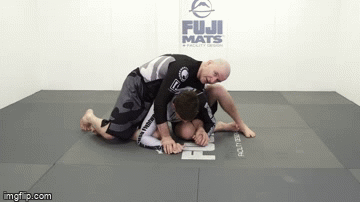
You now shift your legs so that you sit back down, all the while holding on tightly to the “under” side straight grip. You can simply transfer the leg up like previously, or make it a lot more uncomfortable by extending the top arm first. To do that, you just hug it with both your arms across your own chest. Now you can lock up the triangle and finish at will.
Submitting With The Rear Triangle Choke
The rear triangle choke is a great position to control people from, but it is a strangle first, and foremost. As such, the beauty is in the fact that you can finish not just with a triangle choke, but also a variety of armlocks. In that regard, the rear triangle choke is just like the front triangle.
The Strangle
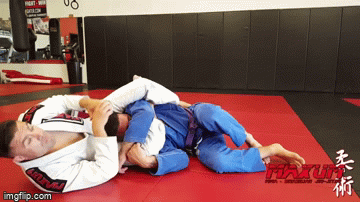
Armbar
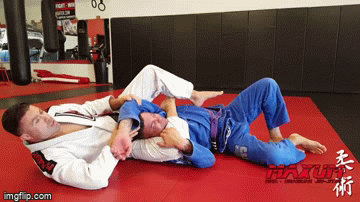
Lung Compression
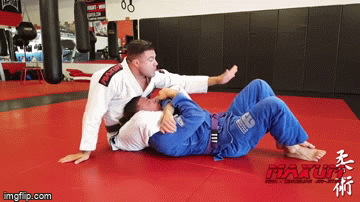
In Conclusion
The rear triangle choke ticks all the boxes of a top BJJ position – you can enter form a multitude of other positions, you can control an opponent, decide to transition towards the back or top control, or finish in a myriad of ways. What’s not to like? The rear triangle is getting the reputation it derives, and with many people messing around with it I can’t wait to see the next step in this move’s evolution. Stay tuned!


![Darce Choke Encyclopedia – Origins, Mechanics and Variations [2025] BJJ, choke, Brabo, BJJ Darce Choke, D'arce Choke, Darce BJJ Choke](https://bjj-world.com/wp-content/uploads/2017/11/JungPoirierLeeYahoo-218x150.jpg)









![Slicin’ Calves Mikey Musumeci DVD Review [2025] Slicin' Calves Mikey Musumeci DVD Review](https://bjj-world.com/wp-content/uploads/2025/04/slicin-calves-mikey-musumeci-dvd-review-218x150.png)
![Jiu-Jitsu For Old Guys Guard Retention Bernardo Faria DVD Review [2025] Jiu-Jitsu For Old Guys Guard Retention Bernardo Faria DVD Review](https://bjj-world.com/wp-content/uploads/2025/03/old-guys-guard-retention-bernardo-faria-dvd-review-218x150.png)
![X-Guard Trickery Kyle Sleeman DVD Review [2025] X-Guard Trickery Kyle Sleeman DVD Review](https://bjj-world.com/wp-content/uploads/2025/03/x-guard-trickery-kyle-sleeman-dvd-review-218x150.png)
![Countering with Crab Ride Anthony Budion DVD Review [2025] Countering with Crab Ride Anthony Budion DVD Review](https://bjj-world.com/wp-content/uploads/2025/03/countering-with-crab-ride-anthony-budion-dvd-review-218x150.png)
![Closet Closed Guard Craig Jones DVD Review [2025] Closet Closed Guard Craig Jones DVD Review](https://bjj-world.com/wp-content/uploads/2025/03/closet-closed-guard-craig-jones-dvd-review-218x150.png)
![Xanadu Back Takes Levi Jones-Leary DVD Review [2025] Xanadu Back Takes Levi Jones-Leary DVD Review](https://bjj-world.com/wp-content/uploads/2025/03/xanadu-back-takes-levi-jones-leary-dvd-review-218x150.png)
![Foot Sweep the World Dainis Nguyen-Huu DVD Review [2024] Foot Sweep the World Dainis Nguyen-Huu DVD Review](https://bjj-world.com/wp-content/uploads/2024/11/foot-sweep-the-world-dainis-nguyen-huu-dvd-review-324x235.png)


![Upper Body Chain Attacks Janine Mocaiber DVD Review [2025] Upper Body Chain Attacks Janine Mocaiber DVD Review](https://bjj-world.com/wp-content/uploads/2025/03/upper-body-chain-attacks-janine-mocaiber-dvd-review-100x70.png)
![Roger Gracie Guard Passing System DVD Review [2025] Roger Gracie Guard Passing System DVD Review](https://bjj-world.com/wp-content/uploads/2025/02/roger-gracie-guard-passing-system-dvd-review-100x70.png)
![Daisy Fresh WHITE BELT Wrestling Curriculum DVD Review [2024] Daisy Fresh WHITE BELT Wrestling Curriculum DVD Review](https://bjj-world.com/wp-content/uploads/2024/10/daisy-fresh-white-belt-wrestling-curriculum-review-100x70.png)
![Closet Closed Guard Craig Jones DVD Review [2025] Closet Closed Guard Craig Jones DVD Review](https://bjj-world.com/wp-content/uploads/2025/03/closet-closed-guard-craig-jones-dvd-review-100x70.png)
![Basic Closed Guard Jasmine Rocha DVD Review [2024] Basic Closed Guard Jasmine Rocha DVD Review](https://bjj-world.com/wp-content/uploads/2024/11/basic-closed-guard-jasmine-rocha-dvd-review-100x70.png)


![Reverse Arm Bar System Andrew Kerfoot DVD Review [2024] Reverse Arm Bar System Andrew Kerfoot DVD Review](https://bjj-world.com/wp-content/uploads/2024/10/reverse-arm-bar-system-andrew-kerfoot-dvd-review-100x70.png)

![Dynamic De La Riva Guard Otavio Sousa DVD Review [2025] Dynamic De La Riva Guard Otavio Sousa DVD Review](https://bjj-world.com/wp-content/uploads/2025/02/dynamic-de-la-riva-guard-otavio-sousa-dvd-review-100x70.png)
![No-Gi Pressure Mastery JT Torres DVD Review [2024] No-Gi Pressure Mastery JT Torres DVD Review](https://bjj-world.com/wp-content/uploads/2024/10/no-gi-pressure-mastery-jt-torres-dvd-review-100x70.png)
![Gracie Secrets Closed Guard Kyra Gracie DVD Review [2024] Gracie Secrets Closed Guard Kyra Gracie DVD Review](https://bjj-world.com/wp-content/uploads/2024/12/closed-guard-kyra-gracie-dvd-review-100x70.png)

![Kill The Underhook Dima Murovanni DVD Review [2024] Kill The Underhook Dima Murovanni DVD Review](https://bjj-world.com/wp-content/uploads/2024/10/kill-the-underhook-dima-murovanni-dvd-review-100x70.png)


![Underhooks With Uncle Jeff Glover DVD Review [2025] Underhooks With Uncle Jeff Glover DVD Review](https://bjj-world.com/wp-content/uploads/2025/02/underhooks-with-uncle-jeff-glover-dvd-review-100x70.png)
![Leg Locks From Beginner To Advanced Dan Manasoiu DVD Review [2024] Leg Locks From Beginner To Advanced Dan Manasoiu DVD Review](https://bjj-world.com/wp-content/uploads/2024/12/leg-locks-from-beginner-to-advanced-dan-manasoiu-dvd-review-100x70.png)

![Edging Yourself Out Of Danger Craig Jones DVD Review [2024] Edging Yourself Out Of Danger Craig Jones DVD Review](https://bjj-world.com/wp-content/uploads/2024/12/edging-yourself-out-of-danger-craig-jones-dvd-review-100x70.png)

![Welcome To The Darce Side Travis Moore DVD Review [2025] Welcome To The Darce Side Travis Moore DVD Review](https://bjj-world.com/wp-content/uploads/2025/01/welcome-to-the-darce-side-travis-moore-dvd-review-100x70.png)

![Miko Hytonen Lapel Chokes From Everywhere DVD Review [2024] Miko Hytonen Lapel Chokes From Everywhere DVD Review](https://bjj-world.com/wp-content/uploads/2024/10/miko-hytonen-lapel-chokes-from-everywhere-dvd-review-100x70.png)
![Heavy Top Game Fabiano Scherner BJJ DVD Review [2025] Heavy Top Game Fabiano Scherner BJJ DVD Review](https://bjj-world.com/wp-content/uploads/2025/01/heavy-top-game-fabiano-scherner-bjj-dvd-review-100x70.png)
